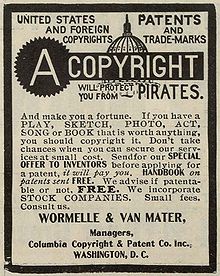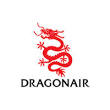The Journal of Crime & Punishment
Software PiracyGo back to page 1
SOFTWARE PIRACY
Go back to:
The Journal of Crime & Punishment


Shrek (c. 1994 – 6 June 2011) was a Merino wether (castrated male sheep) belonging to Bendigo Station, a sheep station near Tarras, New Zealand, who gained international fame in 2004 after he avoided being caught and shorn for six years. Merinos are normally shorn annually, but Shrek apparently hid in caves, avoiding muster. He was named after the fictional character in books and films of the same name.[1]


In my letter to the Minister of Information technology I outline my personal experience with the earliest versions of the internet.
In 1990 at the Bay of Plenty Polytech we used the newly released (Microsoft) DOS 5 operating system, which wasn't officially released until 1991 (actually June or late 1990), (correction 1991) ( but we had machines running this software from the beginning of the year). Look at Wikipedia - DOS Operating Systems timeline for confirmation. I know a lot about this but you don't need to know for now, who did what first and where.
http://en.wikipedia.org/wiki/Timeline_of_DOS_operating_systems
1986-89
1986 January Microsoft releases MS-DOS 3.2. It adds support for 31⁄2-inch 720 KB floppy disk drives. A new device driver RAMDRIVE.SYS creates a virtual disk in either conventional memory, extended memory or Lotus-Intel-Microsoft expanded memory. However, the MS-DOS kernel does not take part in expanded memory manipulations and does not use expanded memory for its own purposes.[11] RAMDRIVE.SYS reportedly uses the undocumented LOADALL CPU instructions, which permit a real-mode program to access any location in extended memory.[198] Presumably this allows RAMDRIVE.SYS to improve upon IBM's relatively slow and unreliable VDISK process. This is the first MS-DOS version Microsoft offered in a shrink-wrapped packaged version for smaller OEMs or system builders.
January IBM announces its reduced instruction set computer (RISC), the RT PC, with a 40 MB hard drive and a physical appearance virtually identical to the PC/AT. PC DOS programs will run on RT PCs with an optional board containing an 80286 processor and a coprocessor program allowing users to switch between AIX and PC DOS operations.[202][203]
March Apricot Computers pre-announces MS-DOS 4.0, the first multitasking version. Apricot will sell MS-DOS 4.0 to European customers as the controlling program for network servers that support a new family of Apricot microcomputers. Apricot will also offer MS-Net 2, a new version of Microsoft's LAN. Developers and industry insiders expect Microsoft to bypass that version in the United States in favor of a more powerful version, MS-DOS 5.0, which will access up to 16 MB of RAM.[214][215][216]
April IBM announced the Expanded Memory Adapter (XMA) for the 3270 PC, which enables users to have multiple DOS sessions and a host session, or multiple host sessions and one DOS session. The XMA is not compatible with the Lotus-Intel-Microsoft specification, but uses a bank-switching technique that closely resembles AST's EEMS.[217][218] IBM also announced TopView 1.10[219] and the 80C88-based IBM PC Convertible, IBM's first computer to use 31⁄2-inch floppy disks, which will be available in May. The PC Convertible uses application-specific integrated circuit (ASIC) chips which combine the functions of numerous chips into fewer, more specialized chips, foreshadowing IBM's strategy to use proprietary architecture in future machines.[
September Compaq introduces the first Intel 80386-based computer, the Compaq Deskpro 386. It was the most powerful personal computer on the market. IBM had not yet ordered a single 386 chip from Intel.[26] Compaq President Rod Canion warned that if IBM doesn't respond with its own 80386-based machine within six months, the Deskpro 386 will become the industry's 32-bit personal computer standard. Two models were announced, Model 40 (40 MB hard drive) and Model 130 (130 MB). Both came with built-in support for up to 8 MB of expanded memory, by using the Compaq Expanded Memory Manager (CEMM)—the first so-called PC "memory manager" for 80386 CPUs—to emulate expanded memory.[228][229] The Deskpro 386 system memory board was expandable to 10 MB, but no operating system was yet available to take advantage of more than the 1 MB address space of the original IBM PC (except by creating RAM disks and disk caches; Compaq utilities VDISK.SYS and CACHE.EXE did this).[230] Compaq called their solution to the 32 MB partition limit enhanced disk, which was implemented with a custom Compaq version of FDISK that allowed creation of multiple MS-DOS partitions on a single hard drive, and the ENHDISK.SYS device driver installed into CONFIG.SYS to access those extra partitions.[231][232][233] Model 130's enhanced disk could hold four 32 MB partitions.
September Microsoft demonstrates multi-tasking MS-DOS 4.0 and MS-Net 2.0 at a Paris trade show. They will be released simultaneously in the fourth quarter this year.[234] Apricot and SMT Goupil both plan to support the new software, but no U.S. vendor has yet opted to back the products.[235] Microsoft president Jon Shirley tells the press that at least one contract is pending with a U.S. manufacturer, but no such contract is ever finalised. He said that MS-DOS 4.0 "doesn't move forward with the 286"—it does not replace Xenix or offer a completely multiuser DOS. It is intended for networks in which every workstation can process requests as a high-performance, non-dedicated file server with high level communications that need to do preemptive multitasking.[236] 220][221]
November NEC Home Electronics, maker of the MultiSync monitor line, forms the Video Electronics Standards Association (VESA) to promote a standard it calls Super VGA, which it says provides 56 percent more pixels on-screen than standard VGA.[282][283]
Microsoft releases MS-DOS 4.01, including the user shell and EMS support.[284] Also, support for hard disk partitions up to 2 GB, and the SmartDrive disk caching program.
1989 September InfoWorld reports that shadow RAM, a technique used by Chips and Technologies' NEAT chipset and AT/386 chipsets to speed performance by loading ROM-BIOS functions into the upper memory area, has become a significant problem for users who want to run programs that use DOS extenders on 1-megabyte systems. The problem arises when products like Lotus 1-2-3, Release 3.0 try to use the memory that is tied up supporting shadow RAM. Invisible Software Inc. announced a $40 program called Invisible RAM which extends DOS memory from 640K to as high as 736K, allowing Release 3.0 users to load the program and have as much as 90 KB remaining for worksheet space. Or users could spend several hundred dollars for additional memory, with prices continuing their slow decline.[301] page 7
1987 August Compaq files a U.S. patent application for "software emulation of bank-switched memory using a virtual DOS monitor and paged memory management." Their invention uses 80386 paging hardware and virtual 8086 mode to emulate expanded memory using extended memory. The patent would be issued in 1990.[261]
August Microsoft ships MS-DOS 3.3. It has the same feature set as the version IBM has been shipping since April.[262]
1988 July IBM ships IBM DOS 4.0. It adds an optional text-based file manager shell (DOSSHELL) with pull-down menus called by typing the F10 key, optional mouse support and a text-based user interface—an alternative to the command-line interface—which is a subset of OS/2 version 1.1's Presentation Manager. The DOS Shell could run in either text mode or graphics mode (on supported hardware), depending on how it was configured in the file DOSSHELL.BAT. Text mode is required to avoid incompatibilities (video conflicts) while running many popular TSR programs in graphics mode.[270] IBM DOS 4.0 supports Lotus-Intel-Microsoft EMS 4.0 on IBM's Expanded Memory Adapter, and is the first MS-DOS/PC DOS version that is "EMS-aware" and can use the EMS memory when it is available.[95] DOS 4 supports hard disk partitions over 32 MB, up to 1024 MB.[271] It also offers a hard drive installation program as an alternative to the procedure used in previous versions (FDISK, FORMAT, SYS, COPY), enhanced video/graphics support and improved error handling.[272] The release was simultaneously announced by Microsoft, but no other OEMs had yet released it for their machines.[273] Because Microsoft already sells in Europe a multitasking version of DOS, which is called DOS 4.0, it is not clear if Microsoft will use a different version number for the new operating system.
July Concurrently with the July 19 DOS 4.0 announcement, Microsoft released an extended memory specification, XMS, Version 2.0, implemented by the device driver HIMEM.SYS in Windows/286. When run on 286- and 386-based systems, XMS brings DOS memory management to three new regions of memory:
- Upper memory blocks (UMBs) above the video RAM and below the BIOS ROM: otherwise unused regions that can be used by EMS hardware and software, and by 80386 memory managers such as QEMM and 386MAX
- High memory area (HMA): boosts access to conventional memory by using the A20 handler that adds 64 KB normally considered part of the extended-memory address range, used by multitasking software such as DESQview and Windows/286
- Extended memory, born in August 1984 with the IBM AT and DOS 3.0, but suffering from lack of management as RAM disks and disk caches battled over the region, now has a sturdy mechanism for governance
The other EMS 4.0 partners are evaluating the XMS spec, but stopped short of endorsing it.[174][275]
October Microsoft urged its OEMs to wait for a bug-fixing update of DOS 4.0 code before shipping their own versions. Microsoft released a DOS 4.0 Binary Adaption Kit - containing the operating system and utilities to help OEMs adapt it to their hardware - shortly after the mid-July announcement of DOS 4.0. Microsoft told manufacturers who distribute DOS under their own labels not to use that BAK and instead wait for the maintenance update, which contains several bug fixes, primarily for a problem with page frames involving EMS.[280][281]